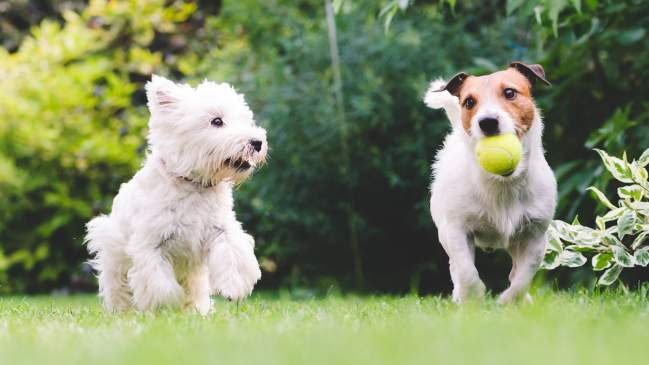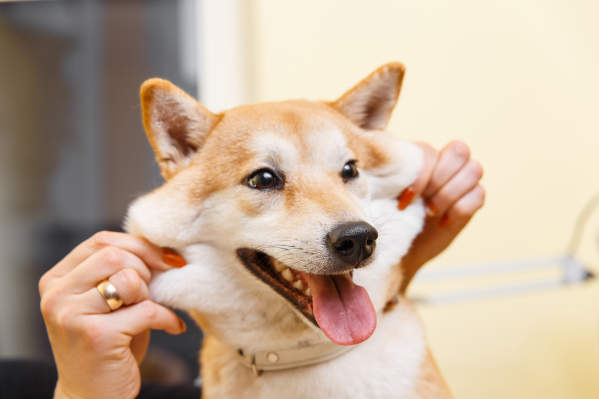Being a professional dog walker, I get to greet a lot of happy dogs on a daily basis. In many ways, my job is a dream come true. After all, anyone who has a dog knows that moment of sheer joy when you walk through the door to total rockstar-level greetings.
While a happy dog is easy to spot, how can you tell when your pup is less than pleased?
“I think it's easy to miss signs of anxiety and boredom, because we are not predisposed to imagine our dogs — great givers of happiness — as anxious or bored,” says Alexandra Horowitz, PhD, associate adjunct professor and head of the Dog Cognition Lab at Barnard College. “Should you return home to find your shoes chewed, the trash eaten, or a pillow disemboweled, you likely have a dog who was at minimum bored and was possibly also stressed at your absence.”
While it’s easy to jump to the conclusion that Fido is intentionally being “bad” when he destroys your television remote, the simpler truth might be that your dog is just desperate for something to do.
“Every dog needs engagement,” Dr. Horowitz says. “They need company; they need things to do; they need spaces to be with others and also by themselves; they need things to chew; they need to play; they need to smell.”
Keeping that in mind, try these strategies to keep your dog engaged and happy (and prevent your belongings from complete and utter destruction).
1. Keep Them Active

All dogs need exercise. According to a survey conducted by the American Kennel Club (AKC), a whopping 73 percent of dog owners rely on outdoor play and daily walks to get their pups moving. So, grab Fido’s favorite toy and hit the backyard for a rigorous game of fetch or — better yet — leash up and venture out to explore the neighborhood together. To give your dog a taste of independence, allow them to choose the route, time permitting, and remember: A dog’s sense of smell is at least 10,000 times more acute than our own, so, be sure to give your pup the opportunity to stop and sniff to their heart’s content.
2. Provide Interactive Puzzle Games
Because dogs are intelligent, sentient animals with brains that aren’t all that different from our own, they crave challenging, engaging activities. You’d be surprised by how quickly some mental stimulation can burn off extra energy. Find an interactive puzzle game that will cater to your dog’s curiosity. Prepare to be impressed as your pup, motivated by smell, works their way through a series of small obstacles to find the tasty rewards hidden inside. If you’re feeling crafty and want to take it one step further, there are several online tutorials with instructions for how to make puzzle games for your dog at home.
3. Offer a Variety of Chew Toys
It’s no secret that dogs love to chew. A natural behavior, chewing burns extra energy while keeping their jaws strong and their teeth clean. Keep an eye on your dog to get a sense of what, and when, they likes to chew. Then make a point of providing a variety of interesting chew toys, and switching them out every few days to prevent boredom.
4. Teach New Tricks and Reinforce Good Behavior
Teaching your dog new tricks through positive reinforcement is an excellent way to provide mental stimulation while improving communication and strengthening your bond. But, according to the AKC, your dog is always learning — whether you’re actively training them or not. Dogs are hardwired to quickly internalize and exhibit whatever behavior is necessary to obtain the reward they’re after. For example, if begging at the dinner table results in a tasty morsel of food, your dog will continue to beg the next time you sit down to eat. Use your dog’s keen observation skills to your advantage by always keeping a pocketful of tasty treats and rewarding desirable behavior. Before long, you’ll see your pup offering good behavior without even being prompted.
5. Engage in More Playtime
While an off-leash trip to the dog park or an afternoon spent in doggie daycare may be the perfect outlet for some dogs, others simply prefer the company of their humans. Dedicate more time in the day to play with your dog. Try playing a game of “Go Find It” or “Hide and Seek,” which would give your pup the opportunity to put that powerful sniffer to work. Make sure to reward their participation with lots of praise and belly rubs — they’ll be over the moon for the extra attention and quality time.
Let Your Dog Be a Dog
Consider the world from your dog’s point of view, and take note of when they seem the happiest. Create opportunities for them to play, chew, run, sniff, be outside, mark their territory, roll in the grass, explore, get dirty, and, you know, just be a dog.
